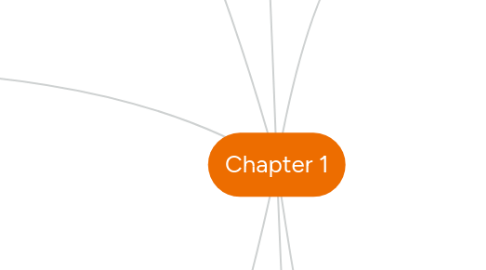
1. Core and Periphery
1.1. Def
1.1.1. The core consists of Western Europe- Within a region is where most of the positiv aspects of globalization are available.
1.1.2. Core: Transnational links, modern development, higher wages, access to health services, food, scientific evolution, employement, education and schools
1.1.3. Periphery: Unemployement, bad communication networks leading to difficult access, low wages, not health services, lack of schools, not health services
1.2. CASE STUDY: THE ITALIAN MEZZOGIORNO (why it's a peripherial area)
1.2.1. Physical
1.2.1.1. Mountainous region
1.2.1.2. Poor soil (exept of the volcanic soil near Naples)
1.2.1.3. Away from major markets
1.2.2. Economic
1.2.2.1. Away from major markets, indursty and employement opportunities so it remains underdeveloped
1.2.2.2. 50% of all work in the Mezzogiorno is black market labour
1.2.2.3. Low pay jobs, high unemployement
1.2.2.4. 75% of workers who refuse a low paid job
1.2.2.5. Many workers don't pay taxes
2. Nuclear
2.1. Advantages of Nuclear
2.1.1. Nuclear plants produce high amounts of energy with low greenhouse emissions
2.1.2. It doesn't depend on fossil fuels and isn't affected by fluctuating oil and gas prices
2.1.3. A properly functioning nuclear power plant actually releases less radioactivity into the atmosphere than a coal-fired power plant
2.1.4. Nuclear fission produces roughly a millio, times more energy per unit weight than fossil fuel
2.2. Disavdantages of Nuclear
2.2.1. Cancers much more dangerous
2.2.2. Limited resources
2.2.3. Accidents can happen (Tchernobyl)
2.2.4. Nuclear waste => 1 000 000 years to destroy it
3. Definitions
3.1. Energy dependency: The extent which we rely on others for our energy supplly
3.2. Sustainability: The ability to maintain a balance between resource and the impact on the environment
3.3. Improving energy efficiency: Using less energy to provide the same service
3.4. Renewable energy: Energy that comes from resources which are naturally replenished on a human timescale
3.5. Reducing emissions: The act of limiting the dischange of polluants by setting emission limits
3.6. ERDF: European Regional Development Fund
3.7. ESF: European Socail Fund
4. Eu's 2030 goals for climate and energy
4.1. Improving energy efficiency
4.1.1. Improve it by 27-30%
4.1.2. Every EU country should be able to calculate its own energy consumption
4.1.3. Create labels from A to G: each class can increase the value from 4%
4.2. Renewable energy
4.2.1. Increase the share of renewable energies to 27% of total EU energy consumption
4.2.2. Invest 50% more money in the new technologies in emerging renewable resources
4.2.3. The cost of solar panels should be reduced by 70% in 7 years
4.2.4. By 2020, 4 million people will be employed in the energy efficiency sector
4.3. Case study Denmark
4.3.1. Improving energy efficiency
4.3.1.1. In 1970, almost 100% relying on oil
4.3.1.2. Combined heat and power
4.3.1.3. Since 1990, GDP increased by 60%
4.3.2. Renewable Energy
4.3.2.1. 30% of national energy is renewable energy
4.3.2.2. 20% of the electricity is provideed by wind
4.3.2.3. Import of hydroelectricity from Norway & Sweden
4.3.2.4. 6% of total energy is biomass (reduce the emission => 3 blocks of the material can heat a house for a year)
4.3.2.5. Energy => Money => Research
4.3.3. Reducing emissions
4.3.3.1. Rejection of nuclear in 1980
4.3.3.2. Less dependent on oil => leading to less polution
5. Advatages of Eu
5.1. Schengen zones
5.2. Single currency
5.3. Help countries that need it
5.4. It prevents and stop conflicts (peace)
5.5. Coordination of fiscal policies
5.6. Same laws increase standards of living in many countries
6. Disadvantages of EU
6.1. Loss of control for governments
6.2. Less control over taxes
6.3. Schemes such as the CAP are inefficient and expensive (Common Agricultural Policy)
6.4. Need help of rich countries who don't want to join
7. History of EU
7.1. After 1945 all was destroyed: no food no homes no economy. USA had a goog economy and helped Europe to flourish. USA were thinking that the development of EU would stop communism spread. 1979 => European Parliament created. 1999 => 11 countries joined and 300 Million people used €
7.2. Dates
7.2.1. 1957: Treaty of Rome => France Belgium Netherlands Luxembourg Italy Germany
7.2.2. 1973 Britain Ireland Denmark
7.2.3. 1981 Greece
7.2.4. 1986 Spain Portugal
7.2.5. 1995 Austria Sweden Finland
7.2.6. 2004 Cyprus Malta Czech republic Estonia Latvia Lithuania Hungary Poland Slovenia Slovakia (A8 => Biggest enlargement)
7.2.7. 2007 Bulgaria Romania
7.2.8. 2013 Croatia
7.3. Cadidates countries
7.3.1. Turkey, Montenegro, Macedonia, Serbia, Iceland
7.4. Copenhagen criteria
7.4.1. A stable government (guaranteeing democracy: respect of human rights & protection of minorities)
7.4.2. A strong enough and growing economy (which has the capacity to cooperate and collaborate with the EU)
7.4.3. The ability to accept all the European laws already instored (such as Schengen zones & fiscal policies)
7.5. Briefs facts about EU
7.5.1. More than half billion citizens
7.5.2. Schengen areas (400 Million people)
7.5.3. Maastricht treaty => Same currency in some countries €
7.5.4. Capital : Brussels European Bank : Frankfurt
7.5.5. 1/3 of the world GDP
7.5.6. 20% of all the world trade
7.5.7. Flag: 12 stars symbol of perfection and circle for harmony
7.6. CASE STUDY: TURKEY
7.6.1. Advantages of Turkey joining
7.6.1.1. Adds new culture to Europe
7.6.1.2. Adds more security (Turkey has the 2 largest army in the NATO)
7.6.1.3. Geostrategic position for oils & gas which could make Europe less dependent on Russia and it's a bridge between Asia and Europe
7.6.1.4. New fresh influx of workers (9% of unemployment only)
7.6.1.5. Fisrt step to build a better relation with the middle east
7.6.2. Disadvantages of Turkey joining
7.6.2.1. Too large population for the votes in parliament
7.6.2.2. 97% of turkey is not in Geographical Europe.
7.6.2.3. Too low GDP which is only 28% of EU average
7.6.2.4. Amnesty international said that it doesn't fully respect human rights
7.6.2.5. Not a mature European Democracy: politics are strongly influenced by military or Islamic groups.
